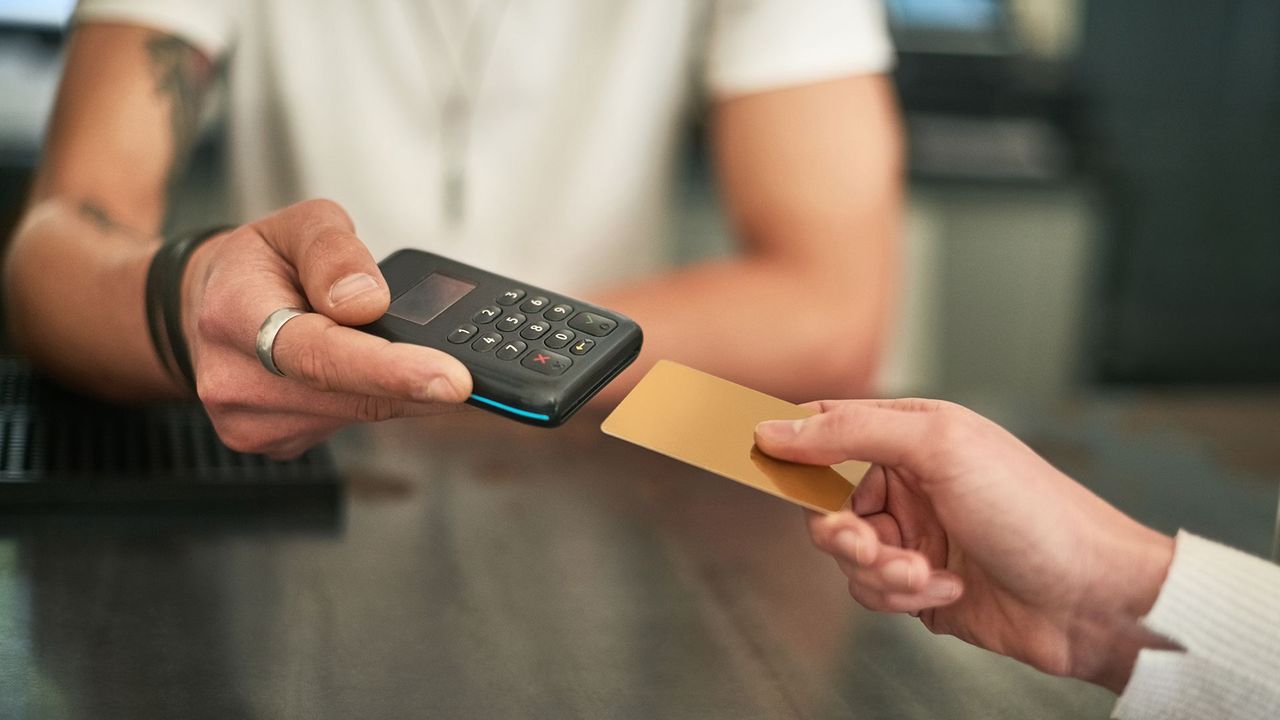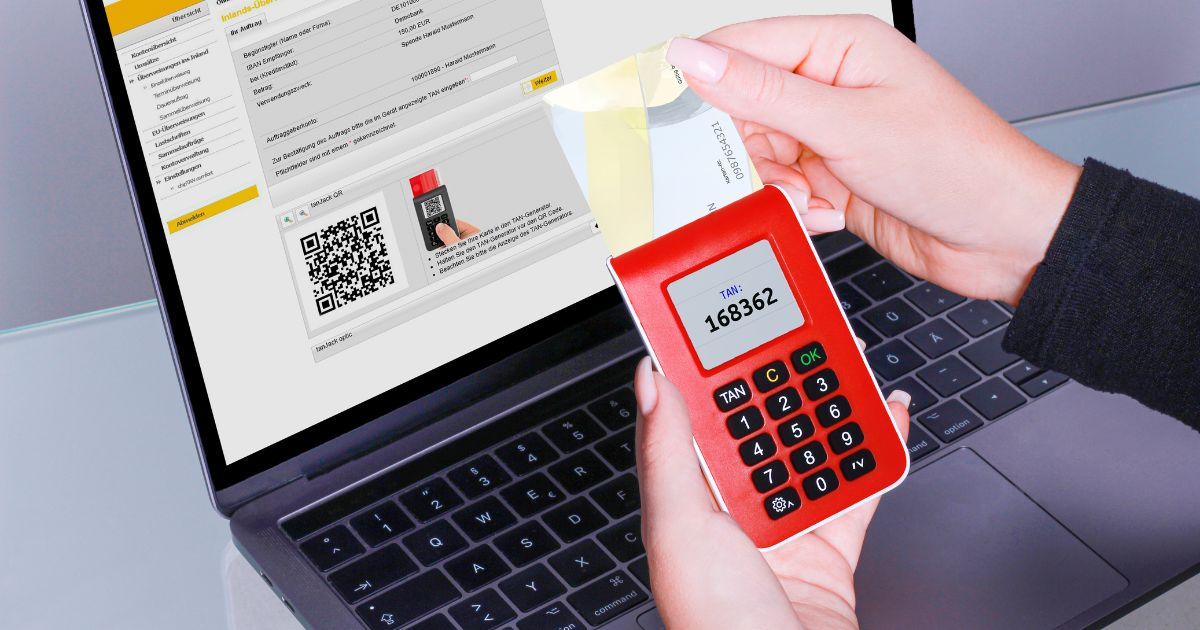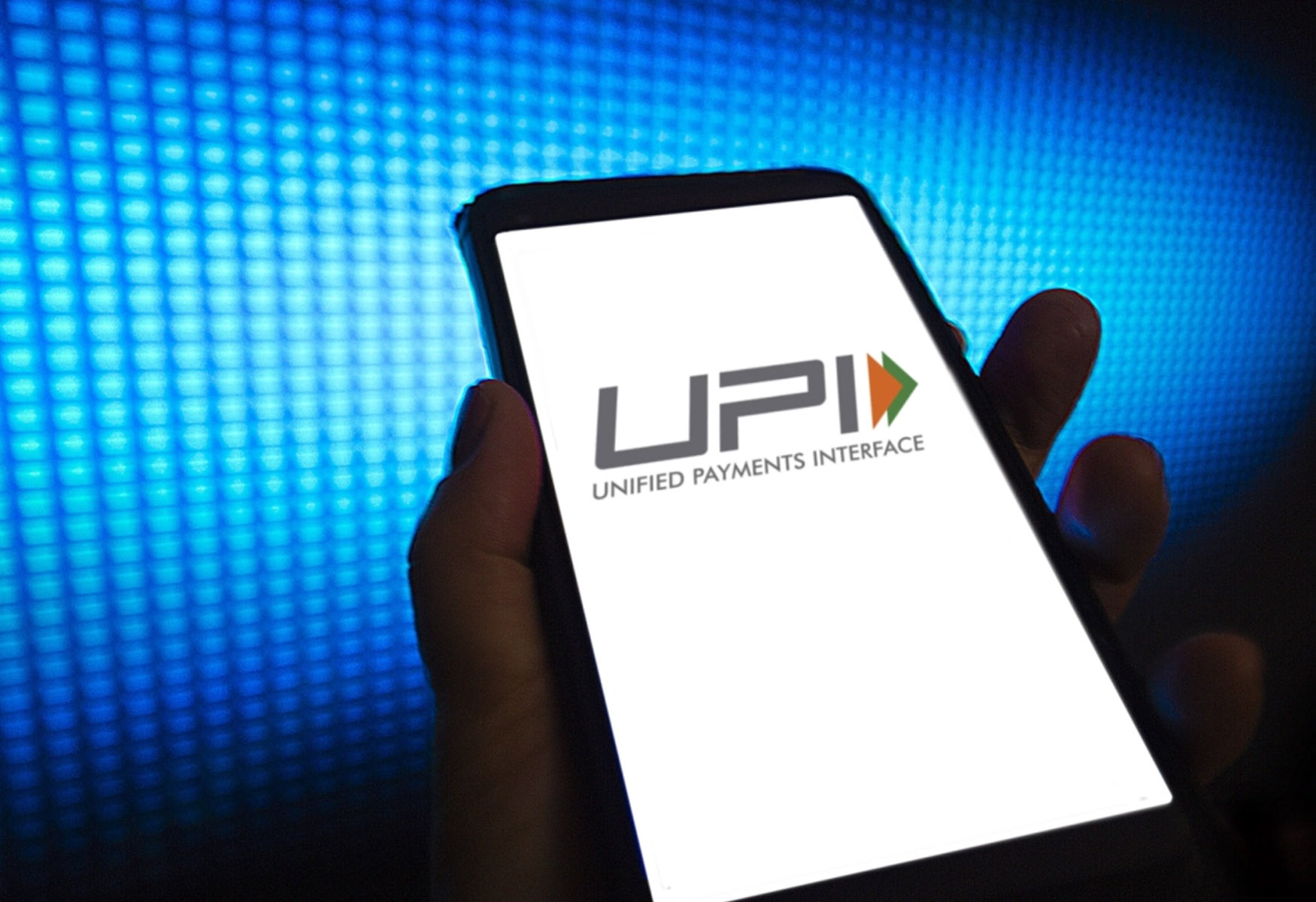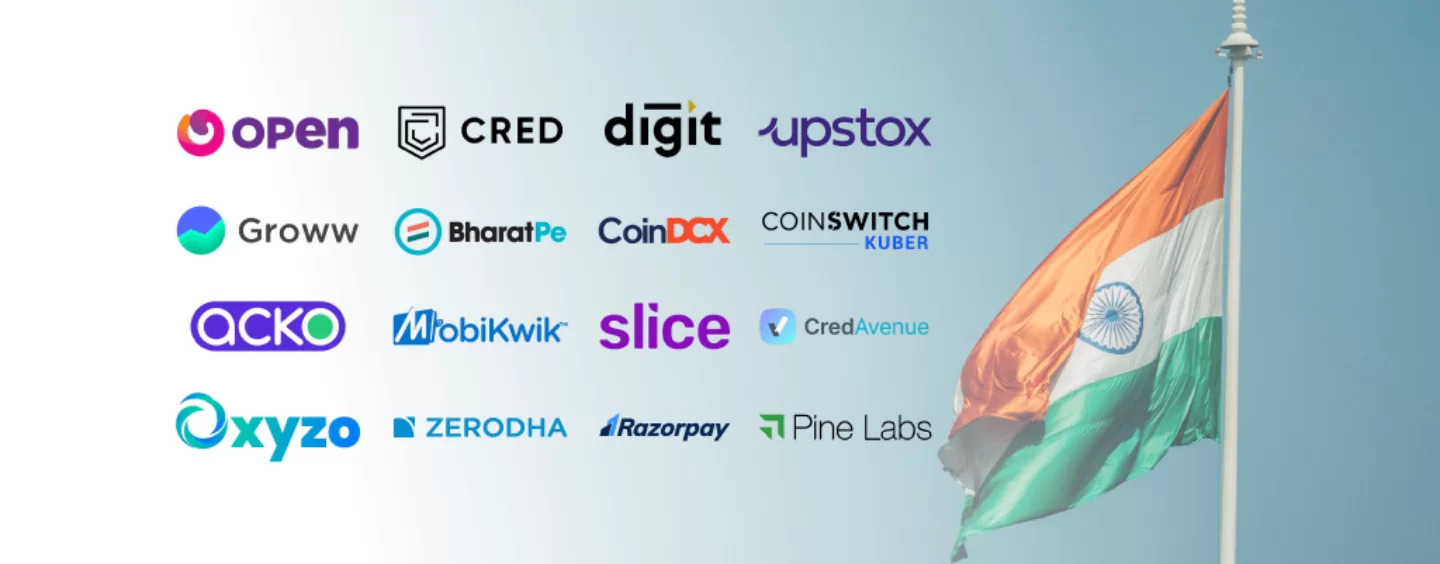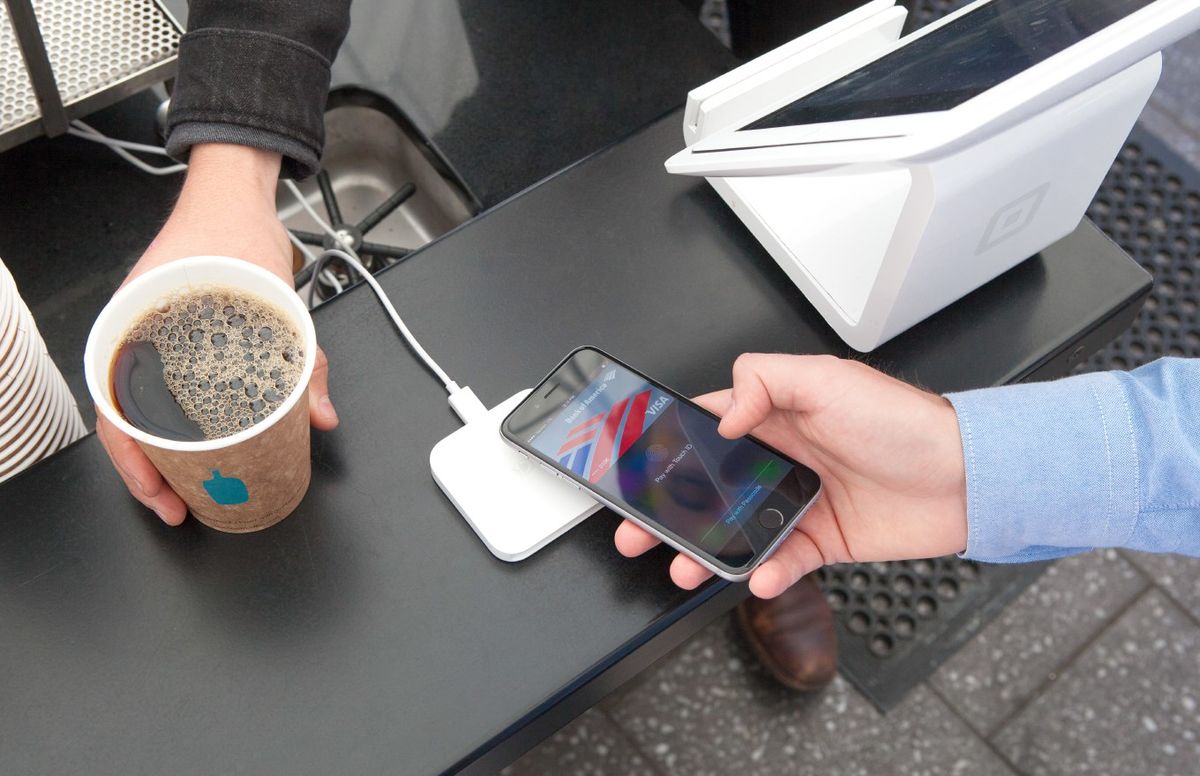Introduction
As the world becomes increasingly digital, cashless payment methods are gaining prominence and transforming the way people transact. In India, the government has taken proactive measures to promote and enable cashless payments, aiming to create a more inclusive and convenient financial ecosystem for its citizens. By leveraging technology and innovation, the Indian government has introduced various modes of cashless payment that offer secure, efficient, and seamless transactions.
These cashless payment modes have simplified the way people make payments for various purposes, such as shopping, utility bills, transportation, and more. Whether it’s a mobile wallet, a government initiative, or an online payment platform, these methods provide a wide range of options to accommodate the diverse needs of Indian consumers.
With the aim of promoting financial inclusion and reducing the dependence on cash, the Indian government has introduced several initiatives and platforms that facilitate cashless payments. These modes of payment offer convenience, transparency, and security while enabling transactions across the country.
In this article, we will explore some of the prominent modes available for cashless payment in India introduced by the government. Understanding these methods will empower individuals and businesses to make informed choices and embrace the digital revolution in financial transactions.
UPI (Unified Payment Interface)
The Unified Payment Interface (UPI) is a real-time payment system developed by the National Payments Corporation of India (NPCI). It allows users to link multiple bank accounts to a single mobile application, enabling seamless and instant fund transfers between different banks.
With UPI, users can create a unique Virtual Payment Address (VPA) that serves as a digital identity. This VPA eliminates the need to provide sensitive banking information such as bank account numbers and IFSC codes during transactions, making it more secure.
One of the key advantages of UPI is its interoperability, which allows users to transfer funds across different banks and payment service providers. This feature makes it convenient for individuals and businesses to transact without the hassle of multiple payment apps or bank accounts.
Moreover, UPI facilitates a wide range of transactions beyond peer-to-peer transfers. Users can make payments to merchants, pay bills, and even scan QR codes for quick transactions. The user-friendly interface and intuitive navigation make UPI a popular choice among smartphone users in India.
UPI also offers additional features that enhance the convenience of cashless payments. Users can set up automatic recurring payments, pay insurance premiums, and even invest in mutual funds through UPI-enabled apps. These features make UPI a versatile and comprehensive cashless payment mode.
Security is a top priority for UPI. It employs multi-layered security measures such as two-factor authentication and passcodes to ensure the safety of transactions. As a result, UPI has gained the trust of users and has witnessed significant growth in adoption across the country.
With its ease of use, wide acceptance, and secure transactions, UPI has revolutionized the way Indians make cashless payments. It has become an integral part of the digital payment landscape in India, offering a seamless and convenient experience to millions of users.
Bharat Interface for Money (BHIM)
Bharat Interface for Money (BHIM) is a mobile payment app developed by the National Payments Corporation of India (NPCI). It is designed to facilitate fast, secure, and cashless transactions, making it easier for individuals to make payments instantly.
BHIM is based on the Unified Payment Interface (UPI) platform, enabling users to link their bank accounts and perform transactions seamlessly. Users can create a Virtual Payment Address (VPA) or use their mobile number to initiate transactions, eliminating the need to share sensitive banking details.
One of the key advantages of BHIM is its versatility. Users can make payments to anyone with a UPI ID, mobile number, or scan QR codes for merchant payments. BHIM also supports various regional languages, making it accessible to a larger population in India.
BHIM offers a range of features to enhance the overall user experience. It provides a user-friendly interface, making it easy to navigate and initiate transactions. The app also allows users to check their transaction history, manage multiple bank accounts, and set payment reminders.
Security is a top priority for BHIM. It incorporates stringent security measures, including biometric authentication, to ensure the safety and privacy of transactions. Users can set up a UPI PIN to authorize every transaction, adding an extra layer of security.
BHIM has gained popularity due to its ease of use and wide acceptance across various merchant outlets. It has significantly contributed to the growth of digital payments in India, promoting a cashless economy while ensuring the security and convenience of users.
Furthermore, BHIM has paved the way for financial inclusion as it can be used on feature phones as well as smartphones. This accessibility has empowered individuals in rural and remote areas to embrace digital payments and reap the benefits of a cashless ecosystem.
In summary, BHIM has emerged as a user-friendly and secure mobile payment app that has simplified cashless transactions for millions of Indians. Its seamless integration with UPI and robust security features have made it a popular choice for individuals and merchants alike, contributing to the growth of digital payments in India.
Aadhaar Enabled Payment System (AEPS)
The Aadhaar Enabled Payment System (AEPS) is a government initiative that leverages the unique identification number, Aadhaar, to facilitate cashless payments. AEPS allows individuals to access banking services through MicroATMs using their Aadhaar details, eliminating the need for physical bank accounts or cards.
AEPS enables individuals to perform various banking transactions, including balance inquiries, cash withdrawals, fund transfers, and more, using their Aadhaar-linked bank accounts. It provides a convenient and secure method for individuals, especially those without regular bank accounts, to access and utilize banking services.
One of the key advantages of AEPS is its widespread reach and accessibility. It caters to individuals in remote areas who may not have easy access to traditional banking infrastructure. By using biometric authentication methods such as fingerprints or iris scans, AEPS ensures secure and accurate identification of users.
AEPS has facilitated financial inclusion by allowing individuals to carry out transactions using only their Aadhaar number and biometric authentication. This has proved particularly beneficial for individuals who may not possess identity documents or have limited access to traditional banking services.
In addition to individual users, AEPS also benefits merchants and service providers. It provides a simplified and cost-effective payment solution for small businesses, enabling them to accept cashless payments without the need for expensive Point of Sale (PoS) machines or card transactions. This has contributed to the growth of digital transactions, even in remote areas.
Status checks and transaction history inquiries are also easily accessible through AEPS, allowing individuals to stay updated on their financial activities. Moreover, AEPS transactions are processed in real-time, offering instant confirmation and reducing the processing time associated with traditional payment methods.
AEPS exemplifies the government’s commitment to creating an inclusive and accessible financial ecosystem for all. By leveraging Aadhaar data and biometric authentication, AEPS has transformed the way individuals, including those in remote areas, transact and access banking services. It has played a significant role in promoting financial inclusion and driving the adoption of cashless payments in India.
National Electronic Funds Transfer (NEFT)
The National Electronic Funds Transfer (NEFT) is a popular electronic payment system in India that facilitates the transfer of funds between bank accounts. It operates on a deferred net settlement basis, where transactions are processed in batches at specific intervals throughout the day.
NEFT provides a secure and convenient way to transfer funds electronically, allowing individuals and businesses to make payments without the need for physical cash or cheques. Users can initiate NEFT transactions through their bank’s online banking platform, mobile banking app, or by visiting a branch.
One of the key advantages of NEFT is its widespread acceptance across banks and financial institutions in India. It fosters interoperability, allowing users to transfer funds seamlessly between different banks and branches, regardless of geographical location.
NEFT transactions are processed in scheduled batches, ensuring timely settlement and transfer of funds. While the settlement time may vary depending on the time of initiation, most NEFT transactions are completed within a few hours.
NEFT transactions are accompanied by transaction reference numbers, which serve as proof of payment and facilitate tracking and reconciliation. This feature provides transparency and accountability, allowing users to monitor and verify the status of their transactions.
Moreover, NEFT has certain transaction limits, allowing users to transfer large sums of money securely. These limits can vary based on the user’s bank and account type, providing flexibility and convenience in conducting financial transactions.
NEFT is widely utilized for a variety of purposes, including salary payments, bill payments, online purchases, and fund transfers to family and friends. Its ease of use, reliability, and widespread acceptance make it a preferred choice for individuals and businesses alike.
In recent years, the Reserve Bank of India (RBI) has made significant enhancements to the NEFT system, including extending the operating hours and reducing the settlement time to further improve the efficiency and accessibility of the platform.
Overall, NEFT continues to play a vital role in enabling cashless transactions in India. Its simplicity, wide acceptance, and secure funds transfer make it a reliable and efficient mode of electronic payment for users across the country.
Immediate Payment Service (IMPS)
The Immediate Payment Service (IMPS) is an instant interbank electronic funds transfer system in India. It enables individuals to make real-time, secure, and convenient transactions using their mobile phones, internet banking, or ATMs.
IMPS enables users to transfer funds instantly, 24/7, even on holidays. It is particularly useful for urgent and time-sensitive payments, such as bill payments, emergency financial assistance, and online purchases.
One of the key advantages of IMPS is its versatility. Users can initiate transactions using various identifiers, including bank account numbers, mobile numbers, and Indian Financial System Code (IFSC) – facilitating easy and quick funds transfer without the need for exhaustive details.
IMPS offers multiple modes for initiating transactions, providing flexibility and convenience. Users can choose to use mobile applications provided by their respective banks, internet banking services, or ATMs to access IMPS.
IMPS transactions are secured with multiple layers of authentication, ensuring the safety and integrity of financial transactions. Users usually need to enter their mobile number, Customer Identification Number (CIN), and Transaction Personal Identification Number (TPIN) for authentication purposes.
The popularity of IMPS has led to the integration of this service in various platforms, such as e-commerce websites and mobile banking apps. This integration allows users to make payments quickly and conveniently without the need to switch between different apps or platforms.
IMPS has also played a significant role in promoting financial inclusion. It provides individuals without access to traditional banking services with an alternative method to send and receive money securely. This has empowered the unbanked population to participate in the cashless economy.
Furthermore, IMPS has inbuilt features such as immediate confirmation of transactions, tracking reference number, and receipts. These features provide transparency and allow users to keep track of their financial activities.
IMPS has revolutionized the way Indians make payments, enabling instant and secure fund transfers. Its accessibility, convenience, and real-time transactions have made it a preferred choice for individuals and businesses across the country.
RuPay Card
RuPay Card is an indigenous payment card scheme in India, introduced by the National Payments Corporation of India (NPCI). It offers a domestic payment network that enables electronic transactions and cashless payments within the country.
One of the key advantages of the RuPay Card is its affordability. Compared to international payment card schemes, RuPay offers lower transaction fees, making it an attractive option for both individuals and merchants. This affordability plays a crucial role in promoting financial inclusion and encouraging the adoption of digital payments.
RuPay Card operates on the same platform as global payment networks, such as Visa and Mastercard, and is widely accepted in India. Users can use their RuPay Cards to make payments online, at point-of-sale (POS) terminals, and withdraw cash from ATMs all across the country.
Another noteworthy feature of RuPay Card is its focus on customization and personalization. It caters to the diverse needs and preferences of Indian consumers by offering a range of card variants, including classic, platinum, and select. This allows individuals to choose a card that aligns with their lifestyle and requirements.
RuPay Card also offers various benefits and features to cardholders. These include cashback offers, discounts, and reward programs that provide additional value for users. These incentives have played a significant role in increasing the adoption of RuPay Cards in India.
Additionally, RuPay Card is necessary for individuals to participate in various government schemes and initiatives. It is often the preferred payment mode for disbursements of social welfare benefits, subsidies, and other government payments, further promoting the use of RuPay Cards.
RuPay Card has witnessed significant growth and acceptance across the country, competing with international payment networks. It has contributed to the expansion of digital payments in India, creating a more inclusive and accessible financial system for all.
In summary, with its affordability, wide acceptance, and personalized offerings, RuPay Card has emerged as a prominent player in the Indian payment card market. Its focus on domestic transactions and government collaborations has propelled the adoption of cashless payments and strengthened financial inclusion in the country.
Bharat Bill Payment System (BBPS)
The Bharat Bill Payment System (BBPS) is a centralized payment platform that enables individuals to pay their bills conveniently and securely. It is an initiative by the National Payments Corporation of India (NPCI) and provides a standardized system for bill payments across various utility services in India.
BBPS offers a wide range of bill payment services, including electricity, water, gas, broadband, DTH (Direct-to-Home) services, and more. It provides a centralized platform where users can make payments for multiple bills through a single interface, eliminating the need to visit different service providers or maintain separate accounts.
One of the key advantages of BBPS is its interoperability. It enables interoperability between different banks and payment service providers, allowing users to make bill payments regardless of their bank or payment service provider. This ensures convenience and flexibility for individuals to pay their bills through their preferred payment channels.
BBPS also offers multiple payment modes to accommodate the diverse needs of users. Individuals can make payments through internet banking, mobile banking apps, bank branches, agents, and authorized service providers. This variety of options makes bill payment hassle-free and accessible for all.
Furthermore, BBPS incorporates security features to ensure the protection of user information and secure transactions. It follows strict guidelines and standards set by RBI and NPCI, making it a reliable and trusted platform for bill payments.
BBPS has simplified the bill payment process for millions of individuals across India. It provides features such as bill reminders and alerts, consolidated payment history, and instant confirmation of payments. These features enable users to stay informed, organized, and in control of their bill payments.
BBPS has played a significant role in promoting financial inclusion by providing a convenient and accessible platform for bill payments. It has allowed individuals in both urban and rural areas to participate in the growing digital payment ecosystem and take advantage of the benefits of cashless transactions.
In summary, BBPS has revolutionized the bill payment landscape in India with its centralized platform, interoperability, and multiple payment options. It has simplified the bill payment process for users while promoting financial inclusion and facilitating the adoption of digital payments in the country.
Mobile Wallets
Mobile wallets are digital payment systems that allow individuals to store money securely and make transactions using their smartphones. They have gained popularity in India due to their convenience, accessibility, and versatility.
One of the key advantages of mobile wallets is the ease of use. Users can download and install mobile wallet apps on their smartphones, create an account, and link it to their bank account or debit/credit cards. This eliminates the need to carry physical cash or cards, making transactions quick and efficient.
Mobile wallets offer a wide range of services, including making payments for various goods and services, transferring money to other users, and even paying bills. Moreover, they provide features such as transaction history, personalized offers, and loyalty programs, enhancing the overall user experience.
Security is a top priority for mobile wallets, and they use multiple layers of encryption and authentication to safeguard transactions. Features like fingerprint recognition, two-factor authentication, and mobile device protection ensure that user data and financial information remain secure.
Mobile wallets have also played a crucial role in promoting financial inclusion. They provide individuals who do not have access to traditional banking services with a means to participate in the digital economy. With just a smartphone and internet connectivity, individuals from remote areas can make payments and access financial services easily.
Mobile wallets have partnered with various merchants, e-commerce platforms, and service providers, enabling users to make payments seamlessly. They often offer discounts, cashback, and exclusive deals, incentivizing users to adopt and use mobile wallets for their transactions.
Moreover, mobile wallets have contributed to the growth of peer-to-peer transactions and the gig economy. They provide a platform for individuals to send and receive money from friends, family, or clients quickly and securely. This has further facilitated the digital economy and reduced the dependence on cash transactions.
In recent years, the Indian government has introduced the Know Your Customer (KYC) guidelines, making it mandatory for mobile wallet users to complete the KYC process. This has improved security and further boosted trust in the mobile wallet ecosystem.
In summary, mobile wallets have revolutionized the way individuals in India make payments. With their convenience, security features, and inclusiveness, they have become an integral part of the digital payment ecosystem. Mobile wallets continue to innovate and adapt to meet the evolving needs of users, driving the adoption of cashless transactions in the country.
Point of Sale (PoS) Machines
Point of Sale (PoS) machines are electronic devices that facilitate cashless transactions at the point of sale in retail stores, restaurants, and other businesses. They enable individuals to make payments using debit cards, credit cards, or mobile wallet apps.
One of the key advantages of PoS machines is their convenience for both businesses and customers. They provide a quick and seamless payment process, reducing the need for physical cash handling and offering a reliable alternative to traditional payment methods.
PoS machines are easy to operate and require minimal training. They have user-friendly interfaces that guide users through the payment process, making them accessible to individuals of all backgrounds and ages.
PoS machines provide various transaction options, including swipe, dip, or tap payments, depending on the type of card or mobile wallet technology being used. This versatility allows customers to choose their preferred payment method and enhances the overall shopping experience.
Businesses that adopt PoS systems can benefit from streamlined operations and increased efficiency. PoS machines generate itemized receipts, manage inventory, and track sales data automatically, making it easier for businesses to monitor their financial transactions and analyze sales trends.
PoS machines are equipped with robust security features to protect customer data and financial information. They comply with industry regulations, such as the Payment Card Industry Data Security Standard (PCI DSS), to ensure secure and encrypted transactions.
Moreover, PoS machines have contributed to the growth of digital payments in India, especially in small and medium-sized businesses. By accepting card and mobile wallet payments, these businesses can attract a wider customer base, improve cash flow, and reduce the risk of handling large amounts of physical cash.
The Indian government has also made efforts to promote the adoption of PoS machines, offering incentives and subsidies to businesses for their installation. This initiative has helped expand the acceptance network and encouraged businesses to embrace digital payment options.
PoS machines have become an integral part of the evolving retail landscape in India. Their ease of use, convenience, and enhanced security have made them an essential tool for businesses and a preferred payment method for customers.
In summary, PoS machines have transformed the way transactions are conducted in retail and other business sectors. Their ability to enable secure and convenient cashless payments has played a crucial role in promoting the adoption of digital transactions and contributed to the growth of the cashless economy in India.
Conclusion
The government of India has introduced a variety of cashless payment modes to promote financial inclusion, convenience, and security in transactions. From the Unified Payment Interface (UPI) to mobile wallets, Aadhaar Enabled Payment System (AEPS) to Point of Sale (PoS) machines, these modes have revolutionized the way Indians make payments.
The wide range of cashless payment options ensures that individuals and businesses can choose the method that best suits their preferences and needs. Whether it’s transferring funds through UPI, making bill payments via Bharat Bill Payment System (BBPS), or using mobile wallets for seamless transactions, each mode offers unique features and benefits.
These cashless payment modes have not only simplified financial transactions but have also fostered financial inclusion. They provide individuals in remote areas with access to banking services and allow the unbanked population to participate in the cashless economy. Moreover, the emphasis on security and authentication ensures that transactions remain secure and user data remains protected.
The government’s push for digital payments has resulted in a significant shift away from cash transactions, promoting transparency, reducing the dependence on physical currency, and driving economic growth. The adoption of cashless payment methods has also paved the way for the growth of e-commerce and the gig economy in India, providing new opportunities for individuals and businesses.
As technology continues to advance, it is expected that cashless payment modes will further evolve and become even more accessible and efficient for users. Innovations such as contactless payments, biometric authentication, and QR code scanning are likely to become more prevalent, offering even greater convenience and security.
In conclusion, the various cashless payment modes introduced by the government in India have transformed the way people transact, making payment processes faster, more secure, and more convenient. These modes have not only facilitated financial transactions but have also spurred financial inclusion and boosted the country’s digital economy. With continuous advancements and improvements in technology, the future of cashless payments looks promising, promising more innovation and greater convenience for Indian consumers.







